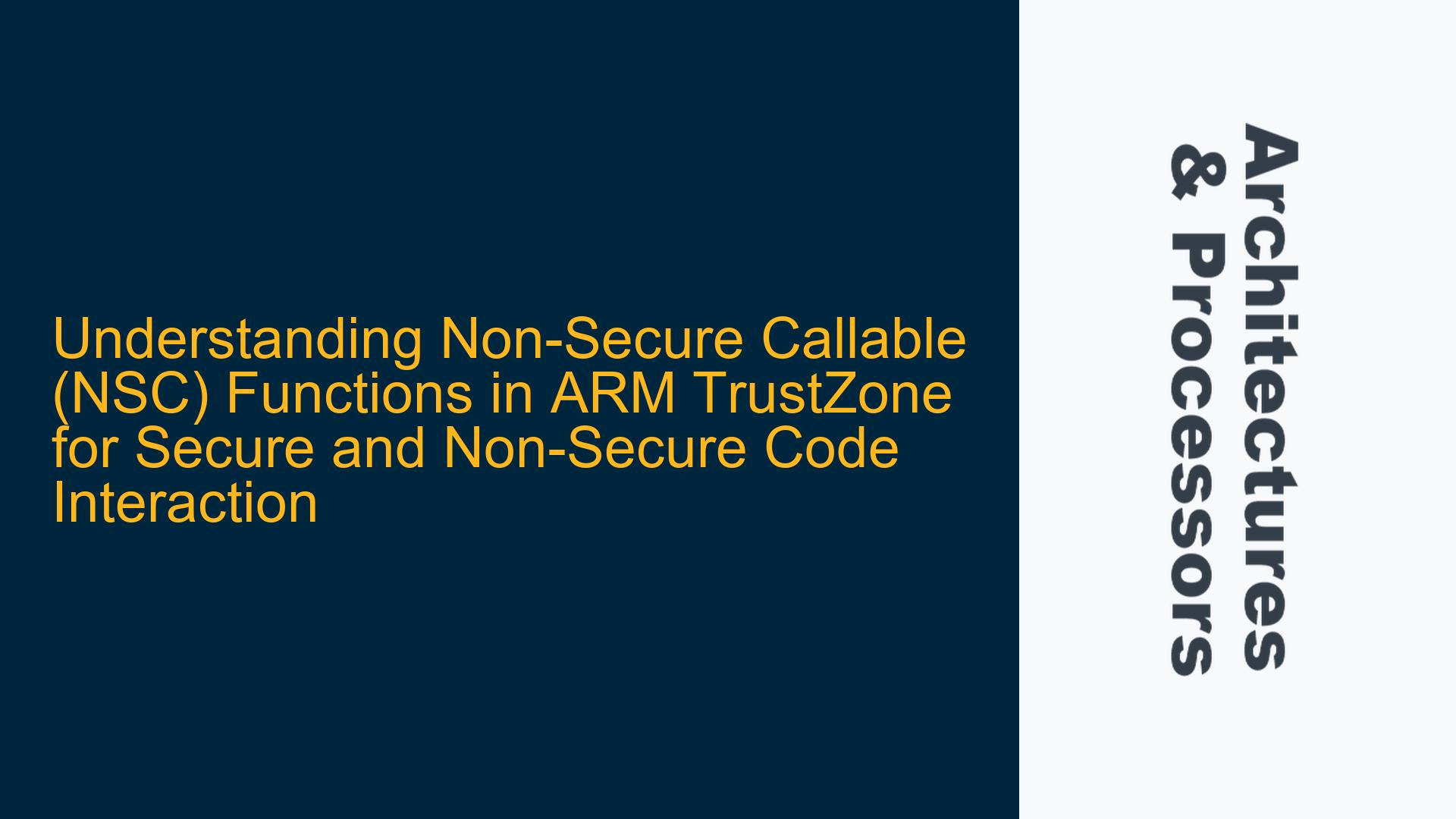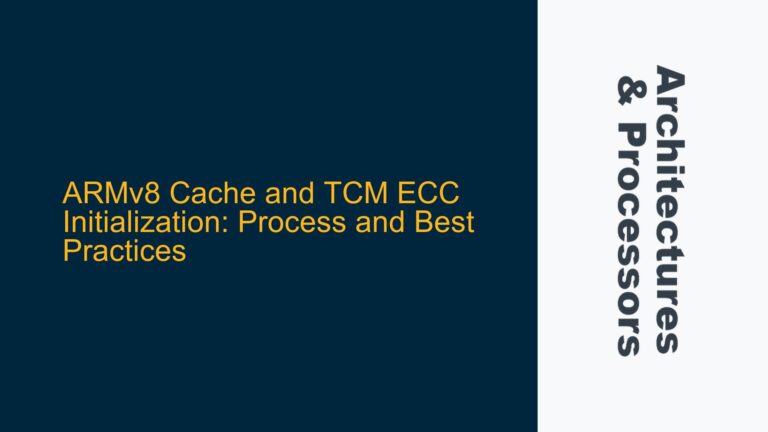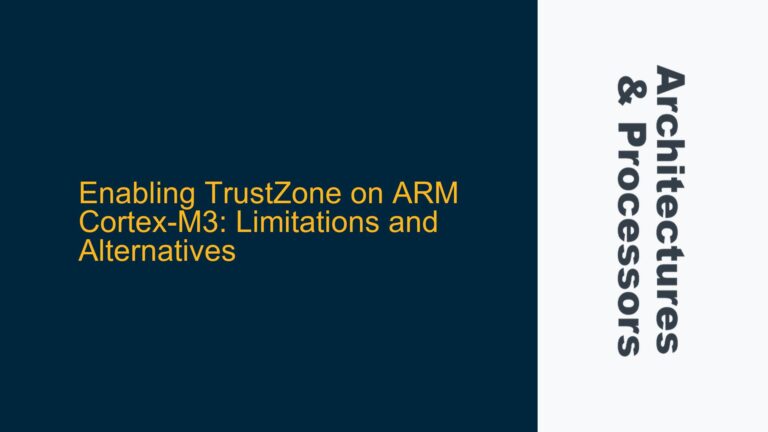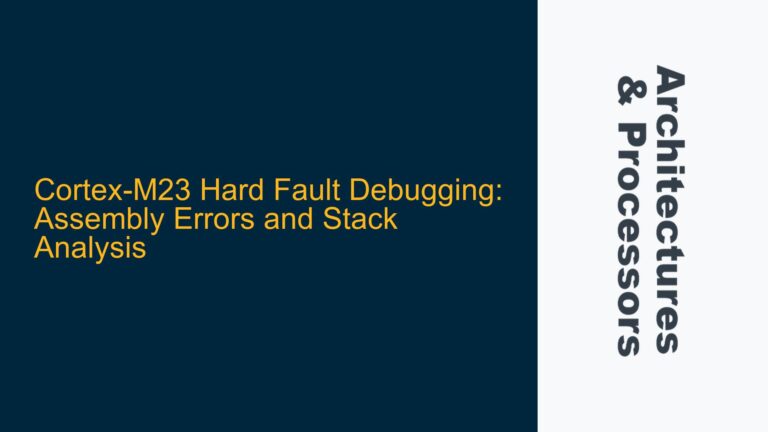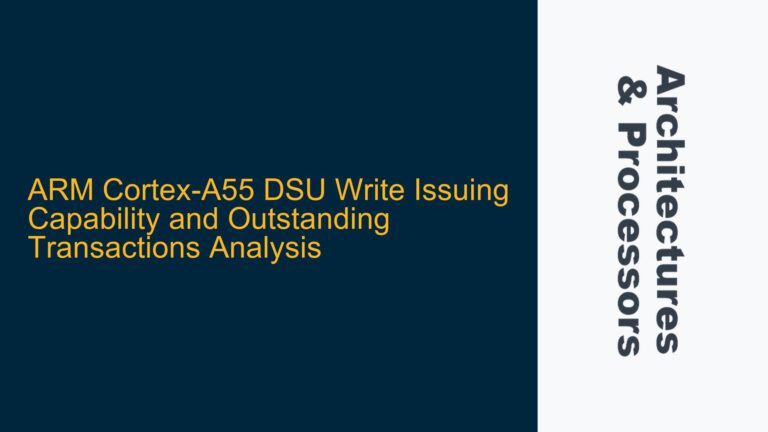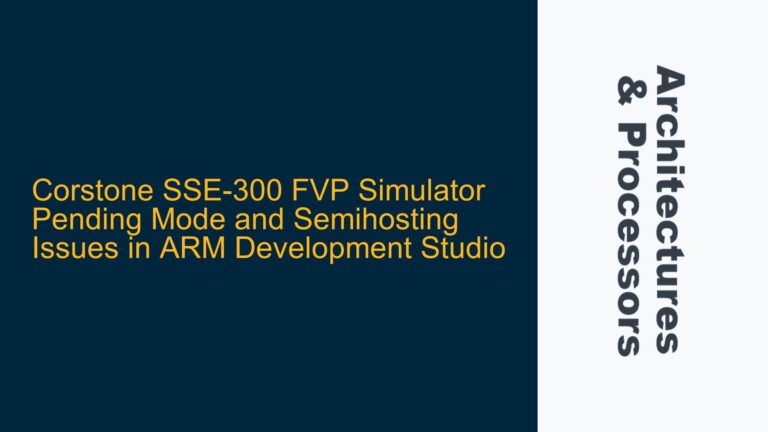Non-Secure Callable (NSC) Functions in ARM TrustZone: Bridging Secure and Non-Secure Worlds
The ARM TrustZone technology provides a robust security framework for embedded systems by partitioning the system into secure and non-secure worlds. This partitioning ensures that sensitive code and data are isolated from non-secure applications, thereby protecting critical system resources from unauthorized access. However, there are scenarios where non-secure code needs to interact with secure code, such as when accessing secure services or performing privileged operations. This is where Non-Secure Callable (NSC) functions come into play. NSC functions act as gateways, allowing controlled entry points from the non-secure world into the secure world. This section delves into the architecture, purpose, and use cases of NSC functions, providing a comprehensive understanding of their role in ARM TrustZone.
The Role of NSC Functions in ARM TrustZone
ARM TrustZone divides the system into two distinct execution environments: the secure world and the non-secure world. The secure world is designed to handle sensitive operations, such as cryptographic functions, secure boot, and trusted execution environments, while the non-secure world runs general-purpose applications. The separation between these two worlds is enforced at the hardware level, ensuring that non-secure code cannot directly access secure resources.
However, there are legitimate scenarios where non-secure code needs to invoke secure functions. For example, a non-secure application might need to request a cryptographic operation from a secure service. To facilitate this interaction, ARM TrustZone introduces the concept of Non-Secure Callable (NSC) functions. These functions are specifically designated entry points in the secure world that can be called from the non-secure world. By using NSC functions, developers can expose selected secure services to non-secure applications while maintaining the overall security of the system.
Architectural Implementation of NSC Functions
The implementation of NSC functions is tightly integrated into the ARM TrustZone architecture. When a non-secure application calls an NSC function, the processor transitions from the non-secure state to the secure state. This transition is carefully controlled to ensure that only authorized entry points are used, preventing unauthorized access to secure resources.
The NSC functions are typically implemented as part of a secure gateway, which acts as a bridge between the non-secure and secure worlds. The secure gateway ensures that only valid NSC functions are called and that the transition between worlds is performed securely. This is achieved through a combination of hardware mechanisms and software conventions.
One key aspect of NSC functions is their placement in memory. In ARM TrustZone, memory regions are marked as either secure or non-secure. NSC functions are placed in a special memory region known as the Non-Secure Callable (NSC) region. This region is accessible from both the secure and non-secure worlds, but it is treated differently depending on the current execution state. When the processor is in the non-secure state, only the NSC region is accessible, and direct access to other secure memory regions is blocked. This ensures that non-secure code can only interact with secure code through the designated NSC functions.
Use Cases for NSC Functions
NSC functions are essential in scenarios where non-secure applications need to interact with secure services. One common use case is in the implementation of secure APIs. For example, a secure cryptographic library might expose certain functions, such as encryption and decryption, as NSC functions. This allows non-secure applications to perform cryptographic operations without gaining direct access to the underlying cryptographic keys or algorithms.
Another use case is in the implementation of secure boot mechanisms. During the boot process, the system might need to verify the integrity of the bootloader or firmware before allowing the system to boot. This verification process can be implemented as an NSC function, allowing the non-secure bootloader to request a secure verification service.
NSC functions are also used in the implementation of trusted execution environments (TEEs). A TEE provides a secure environment for executing sensitive code, such as digital rights management (DRM) or secure payment processing. By exposing certain TEE functions as NSC functions, non-secure applications can interact with the TEE without compromising its security.
Security Considerations for NSC Functions
While NSC functions provide a mechanism for controlled interaction between the secure and non-secure worlds, they also introduce potential security risks. If not implemented correctly, NSC functions can become a vector for attacks, such as privilege escalation or code injection. Therefore, it is crucial to follow best practices when designing and implementing NSC functions.
One important consideration is the validation of input parameters. Since NSC functions are called from the non-secure world, they must carefully validate any input parameters to ensure that they do not contain malicious data. This includes checking for buffer overflows, integer overflows, and other common vulnerabilities.
Another consideration is the handling of return values. NSC functions should ensure that any sensitive data returned to the non-secure world is properly sanitized. This might involve encrypting the data or using secure communication channels to prevent interception or tampering.
Finally, it is important to minimize the attack surface by exposing only the necessary functions as NSC functions. Each NSC function represents a potential entry point for attackers, so it is essential to limit the number of NSC functions and ensure that each one is thoroughly tested and validated.
Conclusion
Non-Secure Callable (NSC) functions are a critical component of the ARM TrustZone architecture, enabling controlled interaction between the secure and non-secure worlds. By providing designated entry points for non-secure code to access secure services, NSC functions allow developers to build secure systems that can still interact with non-secure applications. However, the use of NSC functions also introduces potential security risks, so it is essential to follow best practices when designing and implementing them. With careful consideration and proper implementation, NSC functions can provide a secure and efficient mechanism for bridging the gap between the secure and non-secure worlds in ARM TrustZone.
Memory Partitioning and Security Attributes in ARM TrustZone: Ensuring Proper NSC Function Implementation
The implementation of Non-Secure Callable (NSC) functions in ARM TrustZone relies heavily on the proper configuration of memory partitioning and security attributes. Memory partitioning is a fundamental aspect of TrustZone, as it defines which regions of memory are accessible to the secure and non-secure worlds. Security attributes, on the other hand, determine how these memory regions are treated by the processor. This section explores the intricacies of memory partitioning and security attributes, focusing on their role in the implementation of NSC functions.
Memory Partitioning in ARM TrustZone
ARM TrustZone divides the system’s memory into secure and non-secure regions. This partitioning is enforced at the hardware level, ensuring that non-secure code cannot access secure memory regions. The memory partitioning is typically configured using the Memory Protection Unit (MPU) or the Memory Management Unit (MMU), depending on the specific ARM processor.
The secure memory regions are used to store sensitive data, such as cryptographic keys, secure boot code, and trusted execution environments. These regions are only accessible when the processor is in the secure state. Non-secure memory regions, on the other hand, are used to store general-purpose application code and data. These regions are accessible when the processor is in either the secure or non-secure state, but their accessibility is controlled by the security attributes.
Security Attributes and Their Role in NSC Functions
Security attributes define the access permissions for each memory region. In ARM TrustZone, memory regions can have the following security attributes:
- Secure: The memory region is only accessible when the processor is in the secure state.
- Non-Secure: The memory region is accessible when the processor is in either the secure or non-secure state.
- Non-Secure Callable (NSC): The memory region is accessible from the non-secure state, but it is treated as a secure region when accessed from the secure state.
The NSC attribute is particularly important for the implementation of NSC functions. When a memory region is marked as NSC, it can be accessed from the non-secure state, but it is treated as a secure region when accessed from the secure state. This allows non-secure code to call NSC functions, which are located in the NSC memory region, while still maintaining the security of the secure world.
Configuring Memory Partitioning and Security Attributes
The configuration of memory partitioning and security attributes is typically done during the initialization of the system. This involves setting up the MPU or MMU to define the memory regions and their associated security attributes. The following steps outline the process of configuring memory partitioning and security attributes for NSC functions:
-
Define Memory Regions: The first step is to define the memory regions for the secure and non-secure worlds. This includes specifying the base address, size, and access permissions for each region.
-
Set Security Attributes: Once the memory regions are defined, the next step is to set the security attributes for each region. For NSC functions, the memory region containing the NSC functions should be marked as NSC.
-
Configure MPU/MMU: The final step is to configure the MPU or MMU to enforce the memory partitioning and security attributes. This involves writing to the appropriate registers to enable the memory protection mechanisms.
Example Configuration for NSC Functions
Consider a scenario where a secure project and a non-secure project are being developed. The secure project contains a set of NSC functions that need to be called from the non-secure project. The following example demonstrates how to configure the memory partitioning and security attributes for this scenario:
-
Define Memory Regions:
- Secure Code Region: Base address = 0x00000000, Size = 0x00010000, Access = Secure
- Secure Data Region: Base address = 0x00010000, Size = 0x00010000, Access = Secure
- NSC Region: Base address = 0x00020000, Size = 0x00001000, Access = NSC
- Non-Secure Code Region: Base address = 0x10000000, Size = 0x00010000, Access = Non-Secure
- Non-Secure Data Region: Base address = 0x10010000, Size = 0x00010000, Access = Non-Secure
-
Set Security Attributes:
- Secure Code Region: Secure
- Secure Data Region: Secure
- NSC Region: NSC
- Non-Secure Code Region: Non-Secure
- Non-Secure Data Region: Non-Secure
-
Configure MPU/MMU:
- Write to the MPU/MMU registers to define the memory regions and their security attributes.
- Enable the MPU/MMU to enforce the memory protection mechanisms.
Security Considerations for Memory Partitioning and Security Attributes
Proper configuration of memory partitioning and security attributes is crucial for the security of the system. Incorrect configuration can lead to security vulnerabilities, such as unauthorized access to secure memory regions or exposure of sensitive data. The following considerations should be taken into account when configuring memory partitioning and security attributes:
- Minimize the NSC Region: The NSC region should be as small as possible to minimize the attack surface. Only the necessary NSC functions should be placed in the NSC region.
- Validate Memory Access: The MPU/MMU should be configured to enforce strict access controls. This includes ensuring that non-secure code cannot access secure memory regions and that NSC functions are only called from authorized entry points.
- Regularly Review Configuration: The memory partitioning and security attributes should be regularly reviewed and updated to ensure that they remain aligned with the security requirements of the system.
Conclusion
Memory partitioning and security attributes are fundamental to the implementation of Non-Secure Callable (NSC) functions in ARM TrustZone. By properly configuring these attributes, developers can ensure that NSC functions provide a secure and controlled entry point for non-secure code to access secure services. However, it is essential to follow best practices and regularly review the configuration to maintain the security of the system. With careful consideration and proper implementation, memory partitioning and security attributes can provide a robust foundation for the secure interaction between the secure and non-secure worlds in ARM TrustZone.
Implementing and Debugging Non-Secure Callable (NSC) Functions: Best Practices and Troubleshooting
Implementing and debugging Non-Secure Callable (NSC) functions in ARM TrustZone requires a deep understanding of the underlying architecture and careful attention to detail. NSC functions serve as the bridge between the secure and non-secure worlds, and any issues in their implementation can lead to security vulnerabilities or system instability. This section provides a comprehensive guide to implementing and debugging NSC functions, covering best practices, common pitfalls, and troubleshooting techniques.
Best Practices for Implementing NSC Functions
When implementing NSC functions, it is essential to follow best practices to ensure their security and reliability. The following guidelines outline the key considerations for implementing NSC functions:
-
Minimize the Number of NSC Functions: Each NSC function represents a potential entry point for attackers. Therefore, it is important to minimize the number of NSC functions and only expose the necessary functions to the non-secure world.
-
Validate Input Parameters: NSC functions must carefully validate any input parameters to ensure that they do not contain malicious data. This includes checking for buffer overflows, integer overflows, and other common vulnerabilities.
-
Sanitize Return Values: Any sensitive data returned to the non-secure world should be properly sanitized. This might involve encrypting the data or using secure communication channels to prevent interception or tampering.
-
Use Secure Gateways: NSC functions should be implemented as part of a secure gateway, which acts as a bridge between the non-secure and secure worlds. The secure gateway ensures that only valid NSC functions are called and that the transition between worlds is performed securely.
-
Implement Proper Error Handling: NSC functions should implement proper error handling to ensure that any errors are gracefully handled and do not expose sensitive information to the non-secure world.
Common Pitfalls in NSC Function Implementation
Despite following best practices, developers may encounter common pitfalls when implementing NSC functions. The following are some of the most common issues and how to avoid them:
-
Incorrect Memory Partitioning: Incorrect configuration of memory partitioning can lead to unauthorized access to secure memory regions. Ensure that the NSC region is properly defined and that the MPU/MMU is configured to enforce the memory protection mechanisms.
-
Insufficient Input Validation: Failing to properly validate input parameters can lead to security vulnerabilities, such as buffer overflows or code injection. Always validate input parameters and ensure that they fall within expected ranges.
-
Exposure of Sensitive Data: Returning sensitive data to the non-secure world without proper sanitization can lead to data leakage. Always sanitize return values and use secure communication channels when necessary.
-
Improper Error Handling: Poor error handling can expose sensitive information or lead to system instability. Implement proper error handling and ensure that errors are gracefully handled without exposing sensitive information.
Troubleshooting NSC Function Issues
When debugging NSC function issues, it is important to systematically identify and resolve the problem. The following steps outline a troubleshooting process for NSC function issues:
-
Verify Memory Partitioning and Security Attributes: Ensure that the memory partitioning and security attributes are correctly configured. This includes verifying that the NSC region is properly defined and that the MPU/MMU is enforcing the memory protection mechanisms.
-
Check Input Parameter Validation: Verify that the NSC function is properly validating input parameters. This includes checking for buffer overflows, integer overflows, and other common vulnerabilities.
-
Inspect Return Value Sanitization: Ensure that any sensitive data returned to the non-secure world is properly sanitized. This might involve encrypting the data or using secure communication channels.
-
Review Secure Gateway Implementation: Verify that the NSC function is implemented as part of a secure gateway and that the transition between the non-secure and secure worlds is performed securely.
-
Test Error Handling: Ensure that the NSC function implements proper error handling and that errors are gracefully handled without exposing sensitive information.
Example Debugging Scenario
Consider a scenario where a non-secure application is unable to call an NSC function. The following steps outline the troubleshooting process:
-
Verify Memory Partitioning and Security Attributes:
- Check that the NSC region is properly defined and that the MPU/MMU is enforcing the memory protection mechanisms.
- Ensure that the NSC function is located in the NSC region and that the security attributes are correctly set.
-
Check Input Parameter Validation:
- Verify that the NSC function is properly validating input parameters.
- Ensure that the input parameters fall within expected ranges and do not contain malicious data.
-
Inspect Return Value Sanitization:
- Ensure that any sensitive data returned to the non-secure world is properly sanitized.
- Verify that the data is encrypted or transmitted over a secure communication channel.
-
Review Secure Gateway Implementation:
- Verify that the NSC function is implemented as part of a secure gateway.
- Ensure that the transition between the non-secure and secure worlds is performed securely.
-
Test Error Handling:
- Ensure that the NSC function implements proper error handling.
- Verify that errors are gracefully handled without exposing sensitive information.
Conclusion
Implementing and debugging Non-Secure Callable (NSC) functions in ARM TrustZone requires careful attention to detail and a thorough understanding of the underlying architecture. By following best practices, avoiding common pitfalls, and systematically troubleshooting issues, developers can ensure that NSC functions provide a secure and reliable mechanism for interacting between the secure and non-secure worlds. With proper implementation and debugging, NSC functions can play a critical role in building secure and robust embedded systems using ARM TrustZone technology.
